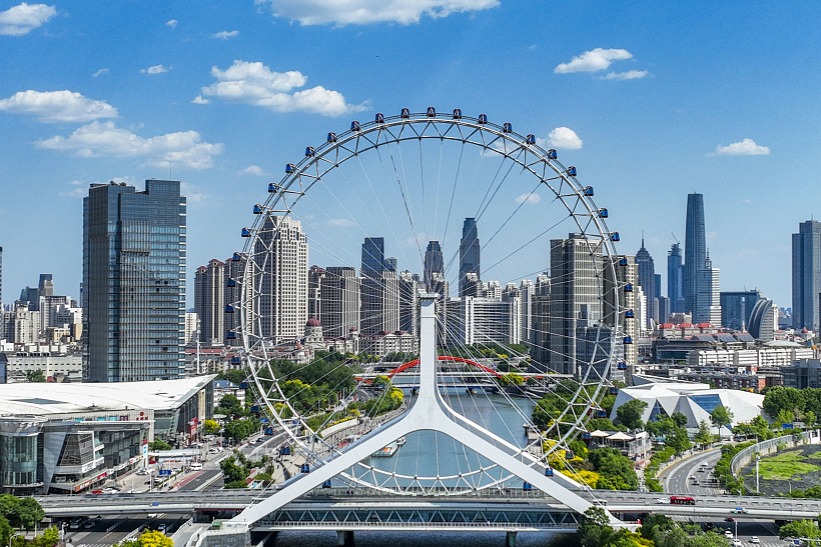The Growing Division Between the Rich and the Poor Leading to Increasingly Severe Human Rights Issues in the United States

Third, due to the high-priced, inefficient medical services, the health conditions of low-income US people have deteriorated. The deteriorating health conditions of the US people are closely related to the high-priced, inefficient US medical system. According to a survey on medical service systems conducted by the Commonwealth Foundation in 2014, among the 11 countries at the same developmental level, the United States had the least efficient, least productive, and most unfair medical service system, it also had the highest mortality rate and infant mortality rate, and its citizens aged 60 had the worst health conditions. Besides this, the survey also showed that US citizens paid twice as much for medical services as those living in the other 10 countries did. The website of the British newspaper The Guardian reported on November 13, 2017, that medical costs and medical insurance in the United States were becoming increasingly expensive, especially those for the treatment of chronic diseases, and the prices of medicines treating asthma or cancer continued to hit record highs.
Fourth, the rising cost of higher education has deprived low-income groups of their opportunities to receive higher education in the United States. The Gallup website reported on August 3, 2017, that since 1980, there had been no measurable indicators showing any improvement in the quality of higher education in the United States, but the prices for higher education had increased rapidly. The Forbes website reported on February 21, 2017, that student loan debts had become the type of consumer debts second only to mortgage debt, outnumbering the total of credit cards and car loans. There are more than 44 million students relying on loans to continue their education, and the total amount of their loans is as high as US$1.3 trillion. The average per capita loan for students enrolled in 2016 was US$37,172. In some regions, cuts in fiscal plans are leading to a decline in school enrollment. The website of the Chicago Tribune reported on September 30, 2016, that the freshmen enrollment declined significantly in many state universities. For example, the number of freshmen enrolled in Chicago State University was half of what it was in 2010, and the number of freshmen enrolled in the University of Illinois has fallen by 25 percent from the previous year. A 2016 study made by a non-partisan think tank, the Center on Budget and Policy Priorities (CBPP), showed that public colleges in Illinois reduced their per-capita funding for the students by 54 percent compared to the number in 2008, while in Arizona, there was a 56 percent reduction. In 2018, the World Bank released a report entitled Intergenerational Mobility around the World. It took the people born in the 1980s as its subject of research and found that the United States was one of the only four developed economies among the 50 economies that did the worst in realizing intergenerational mobility through education and that the United States was among the developed economies that did a bad job in actualizing intergenerational income mobility.
(2) The US Government Lacking the Political Will to Narrow the Gap Between the Rich and the Poor
The US government lacks the political will to change the structural roots that lead to the division of the rich and the poor. Instead, it adopts a series of policies and measures that further widen the gap.
First, the US government's policies and measures to stimulate economic growth are only aimed at benefiting the rich instead of taking into consideration how to reduce the burdens on low-income groups. In his report on his visit to the United States, which was published in May 2018, Philip Alston, the United Nations Special Rapporteur on extreme poverty and human rights, pointed out that the current US administration's strategy of stimulating economic growth benefited only the rich people, not the common people. The current US administration's policy of carrying out unprecedentedly large-scale tax cuts for large companies and the wealthy class at the expense of social welfare seems to be a policy formulated to widen the existing inequality. According to the analysis made by the Institute of Taxation and Economic Policy (ITEP), it is estimated that 27 percent of the revenue generated by the United States tax cuts in 2019 will flow into the pockets of the richest 1 percent people of the United States and the rich people will become the group who benefits the most from the current tax policies. Insufficient government financial investment leads to the lack of corresponding social security for the needy groups in the United States. A research report released by the Pew Research Center on August 18, 2015, showed that the United States had a serious shortage of funds for social security, with a deficit of about US$74 billion in 2014. The 2015 annual report of the Social Security and Medicare Boards of Trustees showed that the US social security system had a deficit of US$25.8 trillion, which was almost 1.5 times the total annual GDP of the United States.
Second, the Health Care Reform Act has been struck down, and full coverage of medical insurance has been rejected in the United States. The United States is one of the few developed countries that do not have universal health coverage. A considerable number of its residents do not have medical insurance and cannot receive the medical care they deserve when they become ill. Despite the US Congress adopting the Healthcare Reform Bill proposed by the Obama administration in 2010 and promising to establish a universal health care system, data released by the U.S. Census Bureau showed that there were still 33 million US citizens not covered by medical insurance in 2015. On May 4, 2017, the U.S. House of Representatives adopted the American Health Care Act by a vote of 217 to 213, overturning many important contents of the Obama's health care reform plan, also known as "Obamacare".

































